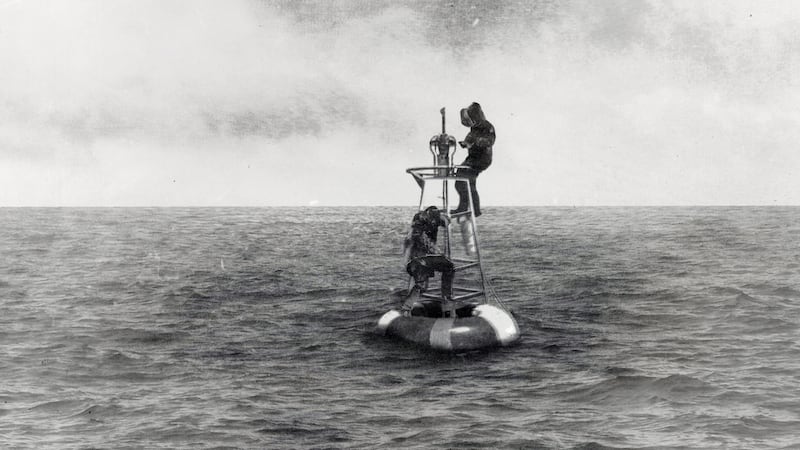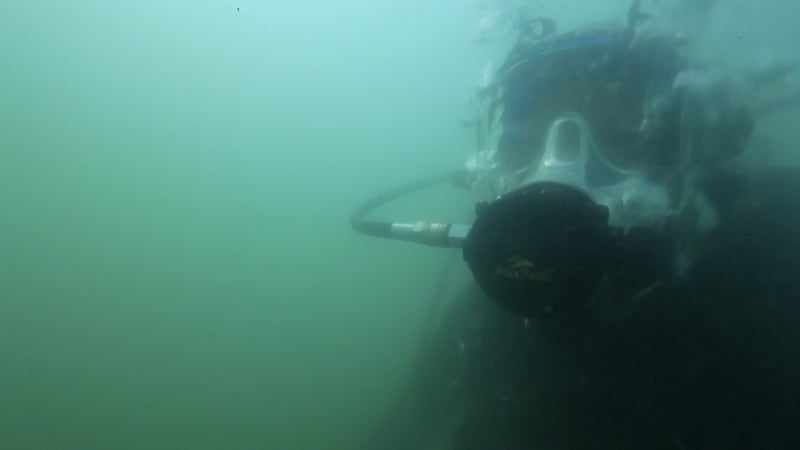Tulca 2015: Seachange
The Festival Gallery, Connaught Tribune Print Works, Market Street; Galway Arts Centre, Dominick Street; Nuns Island Theatre; 126 Artist-Run Gallery, Flood Street; University Hospital, Newcastle Road; James Mitchell Museum, the Quadrangle, NUI Galway
****


Tulca is Galway's winter festival of visual arts. This year's guest curator, Mary Cremin, decided on a big theme: Earth's environmental future. Hence, Seachange, featuring more than 30 Irish and international artists. And that's not the whole story, Cremin notes: at its core, Seachange focuses on the legendary island of Hy-Brasil.
An Atlantis-like mythology developed around the elusive island, said to be located off the west coast of Ireland. Ambiguous early accounts of its existence and endless speculation were eventually dispelled by 19th-century surveys. No island could be found, although the relatively shallow Porcupine Bank, with its pure cold-water coral reefs, was discovered, and it seemed like a good candidate. Hy-Brasil, meanwhile, retains its symbolic power.
Winter is the right season and Galway the right location to gather artistic responses to climate change, especially over a weekend of gale-force winds and driving rain. Cremin looks at the way that now, in what has been popularly but not yet officially dubbed the Anthropocene era, human beings are accelerating irreversible environmental change on a global scale yet have minimal evident interest in where change will leave us, despite some tentative political initiatives.
Rising tides
A disappearing island is nothing compared with the plight of some 200 million people being displaced by rising sea levels within 50 years.
All of which is most vividly expressed in Nuns Island Theatre, where Maria McKinney's stacked pillar forms are backed by Clare Langan's film Floating World, in which Skellig Michael, piercing the clouds, can be seen as standing in for Hy-Brasil. Two other places feature: high-rises in Dubai float on a sea of clouds; and, on Montserrat, habitations are swallowed up by volcanic ash in the exclusion zone.
The images are ravishing, the mood post-apocalyptic. McKinney's pillars, accretions of expanded foam, fruit nets, false nails, cement, steel rod and pipes, are called Abyssals, referring to a deep, close-to-freezing layer of the ocean. In this context, it's tempting to see them as cold- water coral reefs.
The overall installation is completed by Ruth Lyons’s carved rock salt bowls and Martin Healy’s evocations of our tiny scale in relation to those infinite heavenly spaces.
At Galway Arts Centre, Anaïs Tondeur's Lost in Fathoms is the story of another island that disappeared, Nuuk in the Arctic. Tondeur pieces together a plausible narrative of its discovery in the 18th century and the establishment of a scientific observation station, which transmitted data until 2012. "Coincidentally," we are told, "the final signal from Nuuk arrived just as the 34th International Geological Congress was meeting in Australia to discuss the emergence of a new, human-influenced geological age."
The timing is a just a little too convenient, but in fact Tondeur spent a year researching (with physicist Jean-Marc Chomaz) how islands can and do disappear. She has created a compelling, atmospheric fiction.
Healing waters
In the space directly above Tondeur, Louise Hervé and Chloé Maillet's film The Waterway is a much lighter entertainment. Here seawater therapy promises rejuvenation and, with surprising ease, transformation and eternal life.
It would be hard to better the Connaught Tribune Print Works as a gallery. Richard Long's Kilkenny Limestone Circle, 4m in diameter, looks comfortably at home there. Cremin sees Long's practice of undertaking long solo treks in remote locations and making works with ordinary found materials, especially stone and mud, as a good example of how we need to rethink our relationship with the natural world.
But how much of the natural world is left? Susannah Sayler and Edward Morris chart the course of a Californian river from its source through its management and multiple uses. As they put it, it's no longer a river at all, but a resource that, from beginning to end, is captured, owned, manipulated and exhausted. A bit like the wolves we see – presumably in a wolf sanctuary – in Michael John Whelan's elegiac From the Mountain, which takes its cue from the extermination of the Irish wolf.
Both Owen Quinlan and Maggie Madden use found materials associated with the sea. Although the former is best known as a ceramic artist, his Time and Place marshals a wealth of finds from shoreline walks – pebbles, bones, fragments of wood and other waterborne debris – packed in neat rectangles.
Madden has always used found and recycled materials and does so here for her two three-dimensional drawings. Undersea joins a washed-up length of twine with a piece of optical fibre communications cable. The impossibly precarious Shelter implies that a state of benign balance is a fragile thing.
Seachange shines a light on the James Mitchell Geology Museum at NUI Galway. Once part of a more substantial natural history museum, now disbanded and long neglected, the geology museum has avoided extinction and has, with government funding, been restored and refurbished.
With her book The Water Glossary, Carol Anne Connolly has made something beautiful. She has gathered together Irish terms for water in different contexts. The result is amazingly rich and descriptive of the landscape and the weather, not to mention very useful in the circumstances.
- Ends November 29th, tulcafestival.com

















